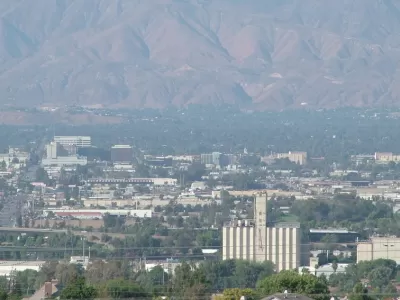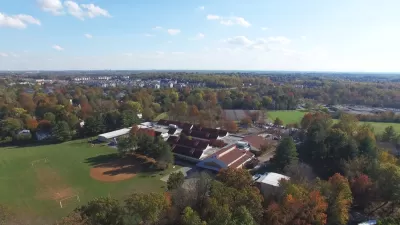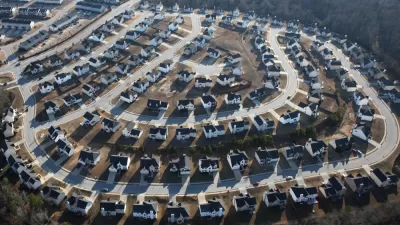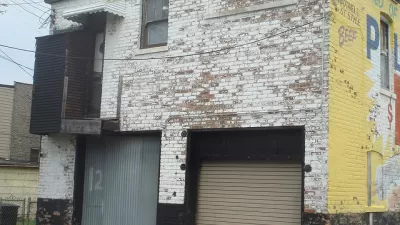New housing development is off to a slow start in Los Angeles in 2017. Although the city defeated an anti-growth ballot measure, LA is still faced with a number of policy and legal challenges to building an adequate supply of affordable housing.

Investigating the underlying reasons to why building more housing is so difficult, The Planning Report recently sat down with Randall Lewis of the Lewis Group of Companies to address Southern California’s challenges, and the opportunities for potential breakthroughs on housing production. A major force of health-oriented development and Inland Empire growth, the Lewis Group develops master-planned communities as well as shopping centers and industrial projects. Drawing on this unique perspective, Lewis offers his take on the underlying challenges that have prevented the production of housing supply adequate to meet Southern California’s increasing need.
Lewis, whose father created the Lewis Center for Regional Policy Studies, explained that CEQA misuse is the number one barrier to getting housing projects off the ground. As Lewis explains, "when CEQA is abused, it adds to the cost of doing business. Now, when you’re starting a new project, you have to factor in higher legal costs. You know you’re probably going to get sued by somebody, and it’s probably going to add at least a few months and many dollars, even if it’s a lawsuit without any merit. Here, if you have a good project—a non-controversial project—you would be lucky to get it through the entitlement process in a year. It would not be at all unusual for it to take 18-24 months—and if there are complexities, it could take a lot longer than that."
Additional costs and regulations, such as the current dispute between the U.S. and Canada on lumber prices have driven up the upfront costs. Higher densities also lead to more structural complications, fire issues, and drainage issues that are being solved on a project-by-project level.
To Lewis, solutions lie in the form of creating various housing types, maximizing spaces, and changing towards healthier lifestyles. His company is doing a series of communities called Harvest, which will all incorporate the growing of fruits, vegetables, and flowers. They’re planned to have edible landscaping, community gardens, and rich programming in partnership with the schools. To Lewis, this will engender the sense of community craved by so many, and help people in these communities live healthier and better lives.
On the policy side, Lewis promoted raising the FHA loan limit. As he explains:
In the Inland Empire right now, FHA limits are in the mid-to-high $300,000 range. But in a lot of areas, it’s very hard to find housing under $400,000 or even $500,000. That change would go very far, and a lot of people have worked for it. So far, HUD has shown no willingness. If the current administration becomes punitive to California on infrastructure funding, that could hurt us. We need to be diligent to make sure we get our fair share." - Randall Lewis
Lewis also promoted continual education of planning commissioners and city councilmembers, so that there is a good forum to share best practices and keep busy local electeds up-to-date on the housing needs of their community.
Read more of Lewis' solutions for Los Angeles in The Planning Report.
FULL STORY: Randall Lewis Opines on Barriers to Increased Housing Production

Alabama: Trump Terminates Settlements for Black Communities Harmed By Raw Sewage
Trump deemed the landmark civil rights agreement “illegal DEI and environmental justice policy.”

Planetizen Federal Action Tracker
A weekly monitor of how Trump’s orders and actions are impacting planners and planning in America.

Why Should We Subsidize Public Transportation?
Many public transit agencies face financial stress due to rising costs, declining fare revenue, and declining subsidies. Transit advocates must provide a strong business case for increasing public transit funding.

Understanding Road Diets
An explainer from Momentum highlights the advantages of reducing vehicle lanes in favor of more bike, transit, and pedestrian infrastructure.

New California Law Regulates Warehouse Pollution
A new law tightens building and emissions regulations for large distribution warehouses to mitigate air pollution and traffic in surrounding communities.

Phoenix Announces Opening Date for Light Rail Extension
The South Central extension will connect South Phoenix to downtown and other major hubs starting on June 7.
Urban Design for Planners 1: Software Tools
This six-course series explores essential urban design concepts using open source software and equips planners with the tools they need to participate fully in the urban design process.
Planning for Universal Design
Learn the tools for implementing Universal Design in planning regulations.
Caltrans
Smith Gee Studio
Institute for Housing and Urban Development Studies (IHS)
City of Grandview
Harvard GSD Executive Education
Toledo-Lucas County Plan Commissions
Salt Lake City
NYU Wagner Graduate School of Public Service





























